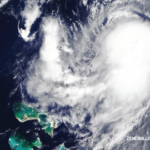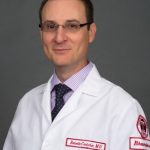Nine years ago, New Orleans was ravaged by Hurricane Katrina. The storm caused billions of dollars in damage, forcing thousands of people to flee the city, many of whom never came back. Those who did return, such as rheumatologist Luis Espinoza, MD, were forced to rebuild from the ground up.
The morning of August 29, 2005, Hurricane Katrina made landfall along the Gulf Coast beside New Orleans as a category 3 storm with sustained winds of more than 120 miles per hour. The storm tore through the city, ripping holes in the roof of the Superdome and breaking levees, leading to flooding that covered 80% of the city in water.
“It was a major catastrophe for the city of New Orleans, for the entire population. It affected every single institution in the city,” recalls Dr. Espinoza.
One of the many institutions affected was Louisiana State University’s School of Medicine, where Dr. Espinoza has worked for 23 years and was serving as chief of the rheumatology section at the time. Its hospitals and buildings were damaged by the storm and its aftermath. The faculty, staff and students were forced to leave New Orleans and set up in Baton Rouge. However, LSU couldn’t leave behind the financial damage Katrina had caused. Dr. Espinoza says the medical school lost a significant number of patients, which also meant it lost much of its financial basis. He says the school was forced to furlough many of the faculty members, including most of the rheumatology section. “I lost three full-time faculty members. These were full professors [who] were furloughed as a result of the devastation caused by Katrina. Then I was the only faculty member left,” he explains. Still, a handful of rheumatology fellows stayed in the section.
A year later, the school of medicine moved back to New Orleans, and Dr. Espinoza began rebuilding his section. For the first few years, he was able to keep it going with the help of practicing rheumatologists from the community. He eventually recruited full-time faculty members. Now, nine years later, Dr. Espinoza’s rheumatology section is fully staffed again. “The program is still alive and going strong. It’s stronger than it used to be prior to Katrina. I think it was part of my job to keep my section going.” Dr. Espinoza’s success is particularly impressive considering LSU’s School of Medicine is still in the process of rebuilding, with its new University Medical Center set to open in mid-2015.


